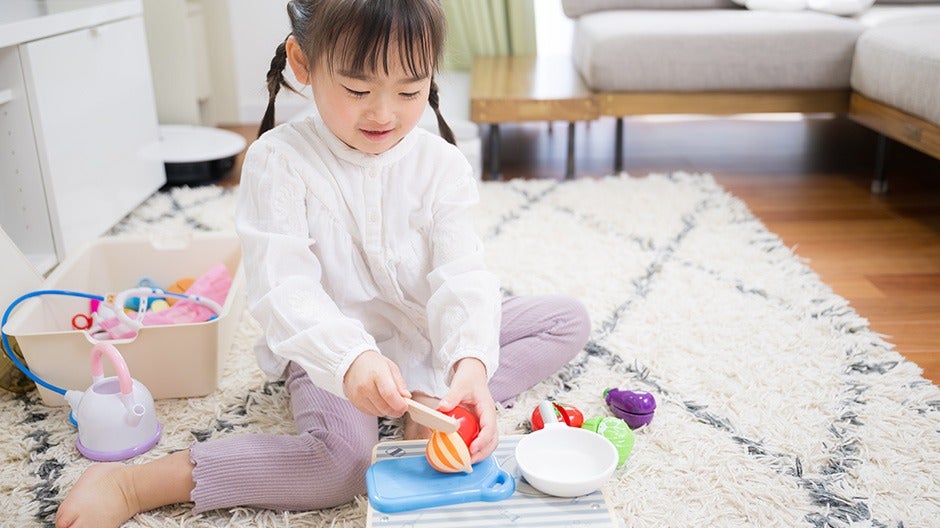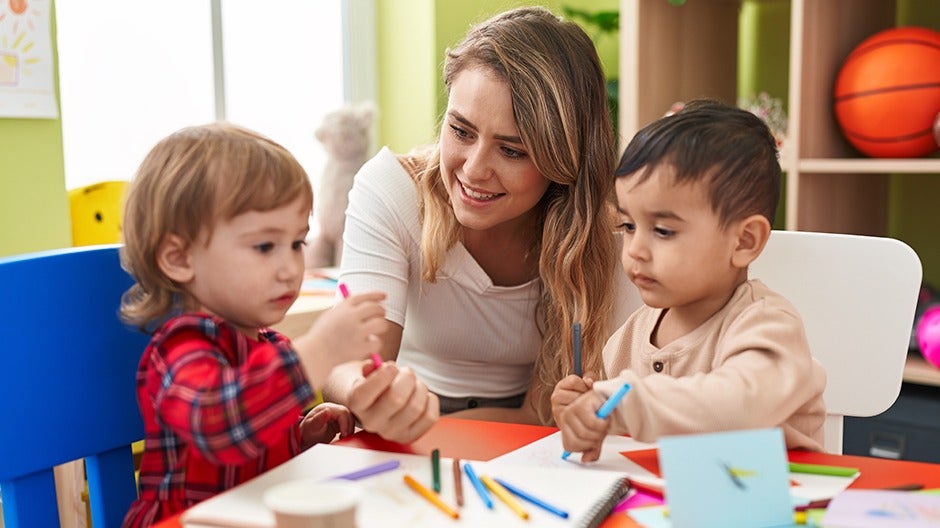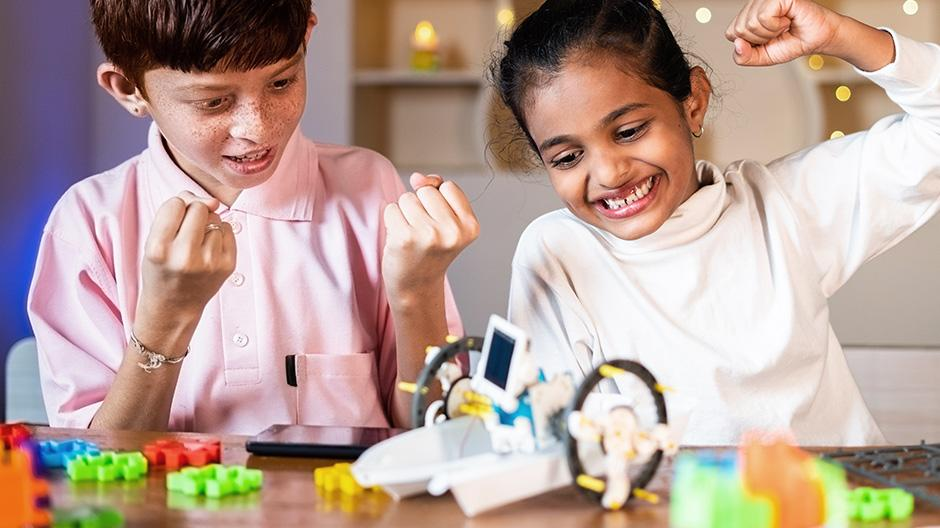To work up to counting, adding, subtracting, and multiplying, your child will first master a universally helpful skill — number recognition! Core Skills like math are part of the 5 C’s at the heart of the Begin approach that help kids thrive in school and life. Kids with well-developed Core Skills early in life tend to have greater academic success down the road.
But what does it take to help your child learn to recognize numbers? We’re here for you with research-based tips and games perfect for developing your preschooler’s skills at home (while having lots of fun!).
The Short Cut
- Number recognition is a Core Skill, one of the 5 C’s that help kids thrive in school and life
- Knowing what numbers come before and after one another will help math make sense in your child’s mind
- Parents can help by incorporating short and sweet number names, counting, and basic math into daily life and activities
- As kids work on number recognition, try counting and organizing numbers in sequence
What Is Number Recognition?
Number recognition is the ability to recognize numbers by their names and the way they look. Not only that, but children will also learn how to write numbers and match them to their representative quantities. It’s no easy feat!
This process takes time, patience, and lots of practice. But all great things do! Number recognition is an essential Core Skill needed to solve basic mathematical problems.
Tips for Encouraging Number Recognition
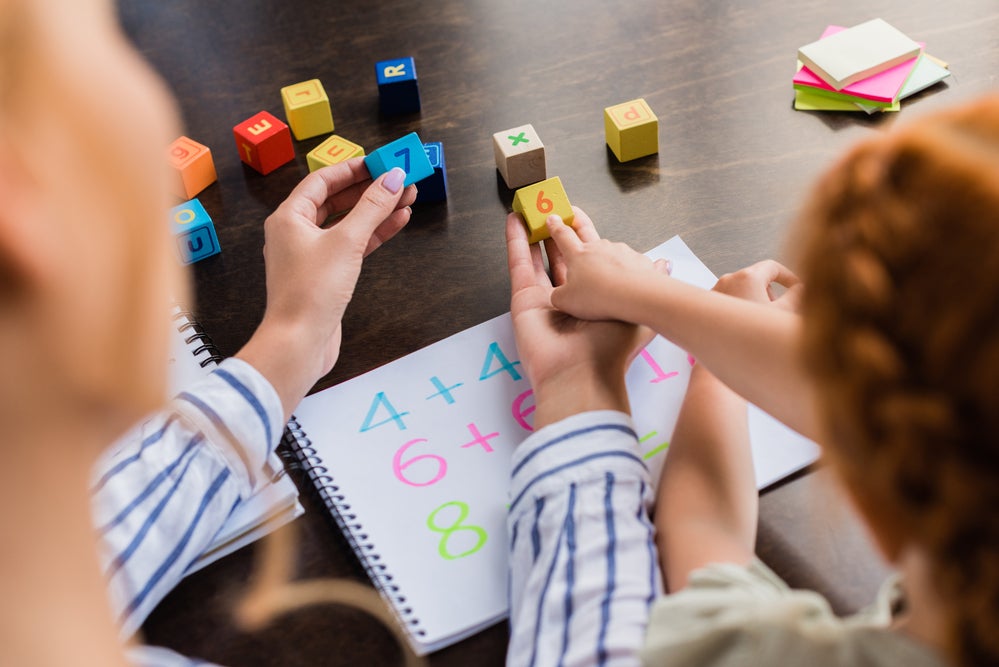
Practice the Language of Math Together
Thinking of math as a separate language may sound funny at first, but think about it — as we advance in math, we’re always learning new terms, like primes, composites, and absolute value.
While your child won’t be solving quadratic equations just yet, at their age, numbers can be equally confusing. By speaking to your child “in math,” you can help this new world of numbers and symbols feel more familiar.
We recommend incorporating number names, counting, and basic addition or subtraction terms into your daily conversations.
Keeping it short, simple, and sweet can be super effective in these early learning stages.
For example, you can sneak math experiences into small moments you share with your child. If you are making dinner together — let’s say assembling pizzas — you can ask your child to help you count the number of pepperoni slices you want on your personal pie.
You can take math conversations anywhere using words such as:
- More
- Less
- Straight
- Curved
- Longer
- Shorter
- Heavier
- Lighter
Try doing this while folding laundry (How many blue socks do you have?), running errands (There are two red cars beside us, but there are four black cars ahead of us. Are there more red or black cars?), or just watching a movie (Which character is the tallest?).
Showcasing how common numbers are in our daily lives, as well as how they can spark conversations, will motivate your child to learn number recognition!
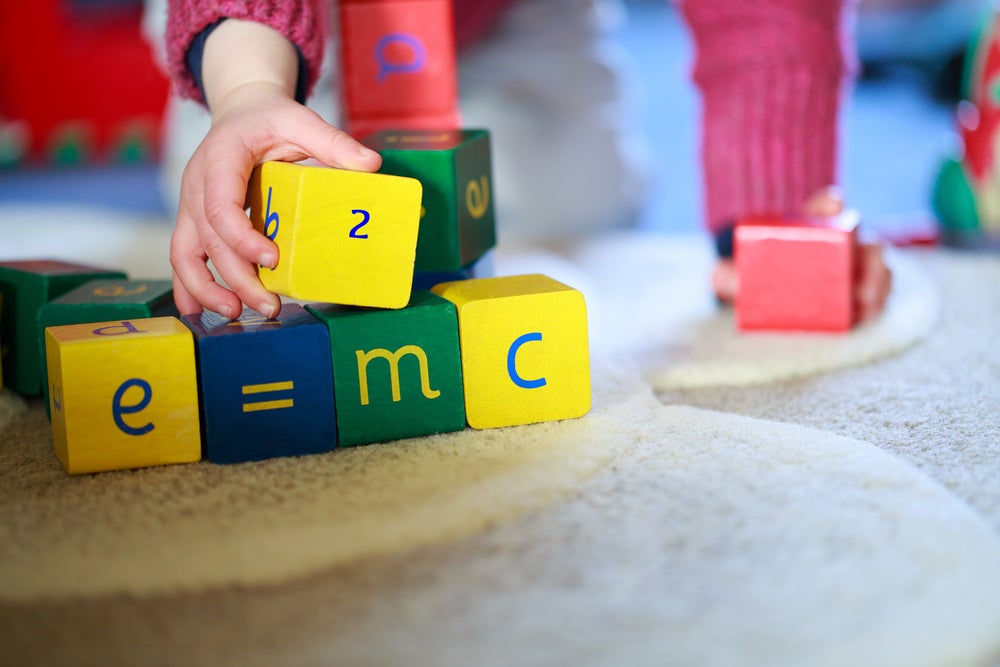
Reinforce Number Sequencing
Knowing what numbers come before and after one another will help things make sense in your child’s mind. As they begin working on number recognition, we encourage counting and organizing numbers in order — a.k.a. in sequence.
Their skills will grow over time. Once that happens, you can play around with numbers together by counting by twos, fours, or even counting backward.
The possibilities are endless! But we recommend mastering the basics of sequence counting first.
Use Counting Principles
Even as your child learns to count in sequence, they will also learn that as numbers ascend, their values increase as well.
When counting objects, your child will learn that only one number is “assigned” to each object they count. To identify how many items are in a single group, they will assign a number to each one, in sequence, until they’ve all been counted.
This means that if they have seven grapes as an afternoon snack, when counting them, they cannot count each grape as “number one.”
With each additional grape, the total value of the group goes up. The last grape they count equals the final amount.
This is a difficult aspect of number recognition. Have no fear, though! With time (and the fun, easy games we’ve listed for you below), your child will get there.
Number Recognition Games

Number Bubbles
What You’ll Need
- Chalk
- A bubble blower
- Some sunshine! (You’ll be playing outside)
What to Do
You’ll want to start by drawing numbers on the sidewalk. Don’t be afraid to start small with numbers 1 – 5. You can gradually expand the numbers your child works with as they get more comfortable with small numbers.
Using the same chalk, encircle each number with a “bubble” (a circle drawn around the perimeter of the number). Next, you’ll call out a number for your child to identify.
For example, you might call out the number 4. Your child’s job is to run to the number 4 as fast as they can. If they identify the number correctly, then they get to do a quick celebration dance beneath a shower of bubbles!
Repeat until you finish all the numbers or run out of bubbles.
Number Scavenger Hunt
What You’ll Need
- Walk-worthy weather
- Number cheat-sheet (optional)
What to Do
The best part about this game? You can take it anywhere!
All you’ll need to do is go on a stroll with your child. Around the block, in a park, through the grocery store — really any place will do.
You’ll be “hunting” for numbers together in sequence. For example, if your child sees the number 1 on a neighbor’s mailbox, they must point to it and shout, “One!”
You’ll continue on until they reach their limit of numbers. Each time you play, you can aim to reach a new “high score” by identifying the next largest number.
When your child is just starting out, it may be helpful to have a cheat-sheet handy with numbers and names. That way, in case they can’t quite put their finger on a number they spot, you’ll be there to lend a helping hand!
Drawing Numbers with Shaving Cream
What You’ll Need
- Shaving cream
- A flat, dry surface (like a baking pan)
- Lots of paper towels for cleaning up
What to Do
This activity is a surefire hit. Mostly because kids love any excuse to get messy! They’ll have fun and hone their number recognition skills at the same time. It’s a win-win!
To start, cover a flat, clean, dry surface with a good bit of shaving cream. Try to keep the shaving cream somewhat level and flat so it’s easy for your child to see what they’re drawing.
Your job is to call out number names. Your child will try to draw the number you gave as a prompt. For every correct number they draw, they receive a point. Be sure to smooth out the shaving cream either after each number or when the tray gets full.
The tactile nature of the activity means your child is sure to be engaged, excited, and absorbing all the numbers they draw!
Making Number Jewelry

What You’ll Need
- Colored beads
- String
- A “color code” that matches individual colors with individual numbers
- For example: Blue bead = 1; pink bead = 2; orange bead = 3; etc.
What to Do
For this activity, you will help your child create their very own jewelry by following the color code you write out.
The color code necessitates that for every color your child places on the bracelet or necklace they’re making, they have to use the number of beads noted.
This activity specifically reinforces the idea of number values. It will also help your child work on their counting skills.
For example, your child may want a bracelet that alternates between blue and orange beads. That means they will need to count out 1 blue bead, then 3 orange beads, and so on until their bracelet is complete.
Who knew math could be so stylish?
Number Basket Toss
What You’ll Need
- Two or three laundry baskets or buckets
- Sticky notes
- A Sharpie or marker
- Paper balls or regular balls (at least 20)
What to Do
Label each of your baskets with a different number. We encourage you to change it up to make the activity more challenging!
For example, if your child is just starting to work on number recognition, you could label the baskets, 1, 2, and 3; but to advance in difficulty, you could choose 4, 7, and 10.
Your child’s goal will be to throw the correct amount of paper balls into each basket until they hold a matching number of balls. So, the #3 basket would hold three paper balls.
Once all of the balls are full, their reward will be to dump the balls over their head — or yours. Make sure to play up the excitement!
As we mentioned before, there are all types of ways to make this activity unique to your family.
You can add or subtract the number of buckets, use colored paper to signify different number values for the paper balls, add in bonus points for trick shots… the list goes on!
Number Cookies
What You’ll Need
- Sugar cookie batter
- Number shape cookie cutters (optional)
What to Do
What’s better than a math activity with a sweet prize at the end?
Together, you and your child can not only be master bakers but master mathematicians, too. Using an easy sugar cookie dough recipe, you and your child will make and form cookies into small number shapes.
It might take some creativity and handiwork to figure out how to make the dough look like numbers. But don’t worry; if the process ever becomes too difficult, that’s what the cookie cutters are for!
We know that eating is the best part of this activity. You can eat like a mathematician, too! Once the cookies are cool, challenge your child to eat their number cookie in the same amount of bites it represents.
The number 9 cookie will require lots of small nibbles.
Number Recognition Leads to Success

With number recognition under their belt, your child will be able to master those first tricky aspects of pre-K math in no time.
We hope these number recognition games give you some things to look forward to at home. And whenever life feels too hectic to set up these games, you can rely on our HOMER app, which has fun and effective number recognition games built right in.
Your child won’t miss a beat exploring our personalized activities. In fact, they’ll be making music out of algebra equations before you know it!




